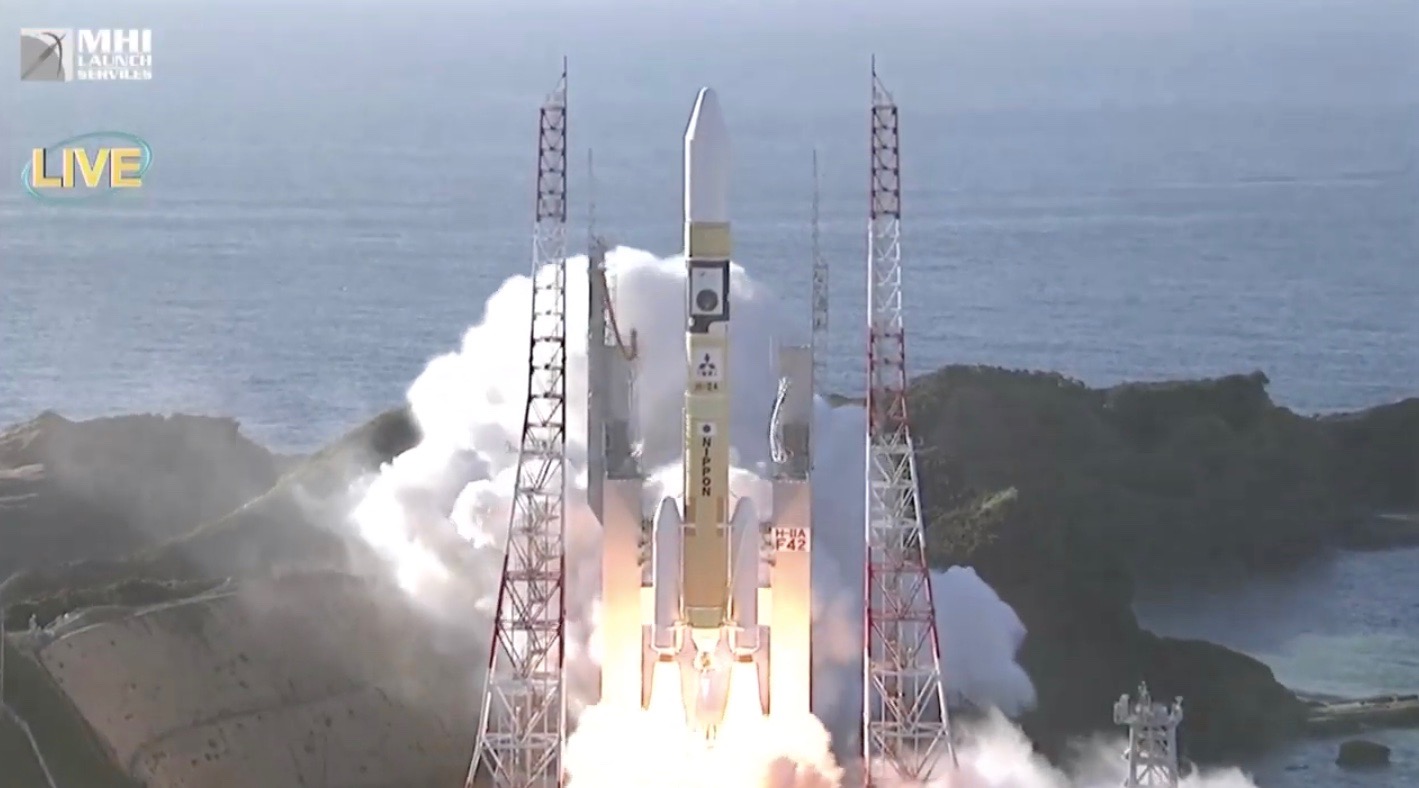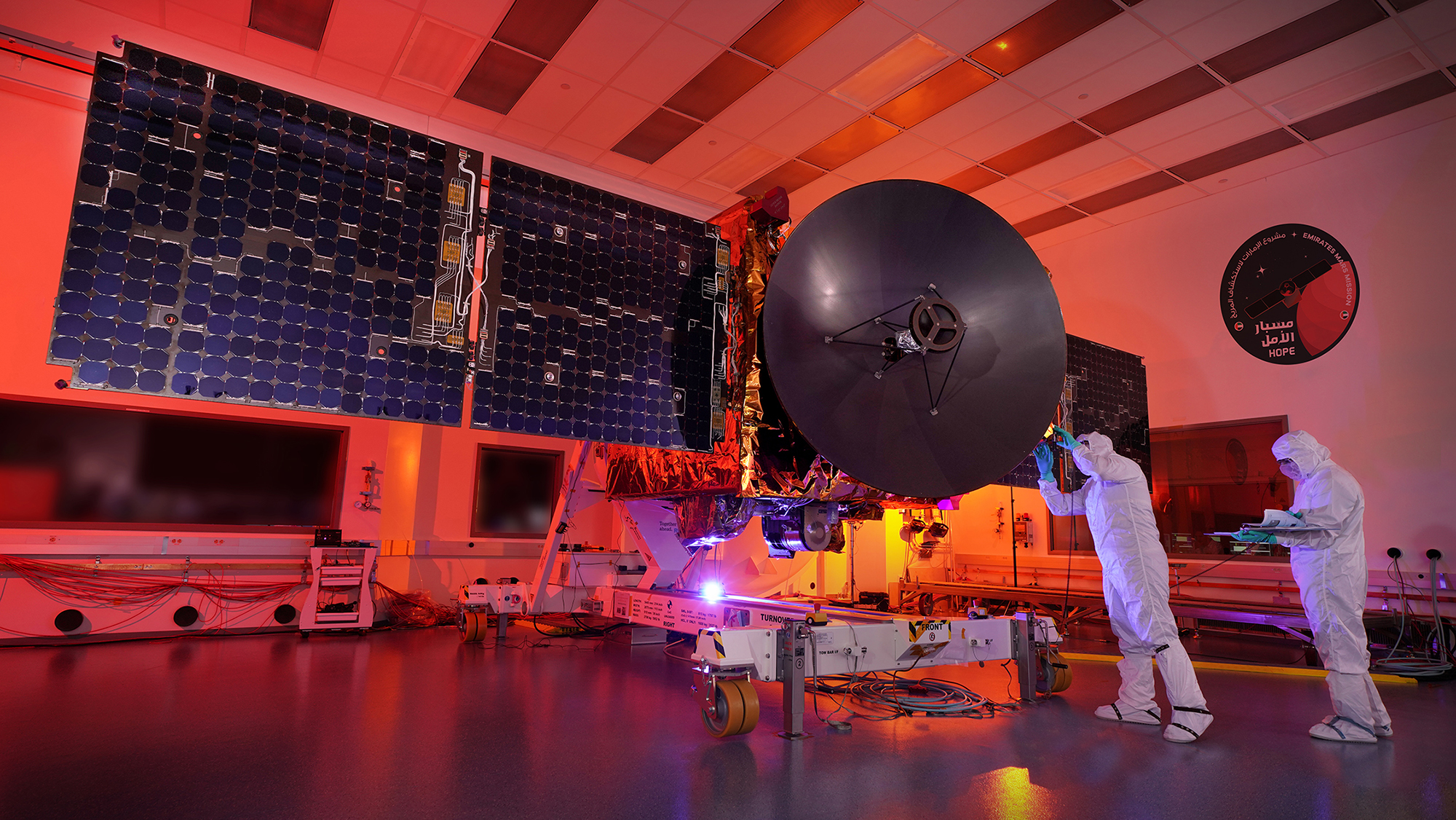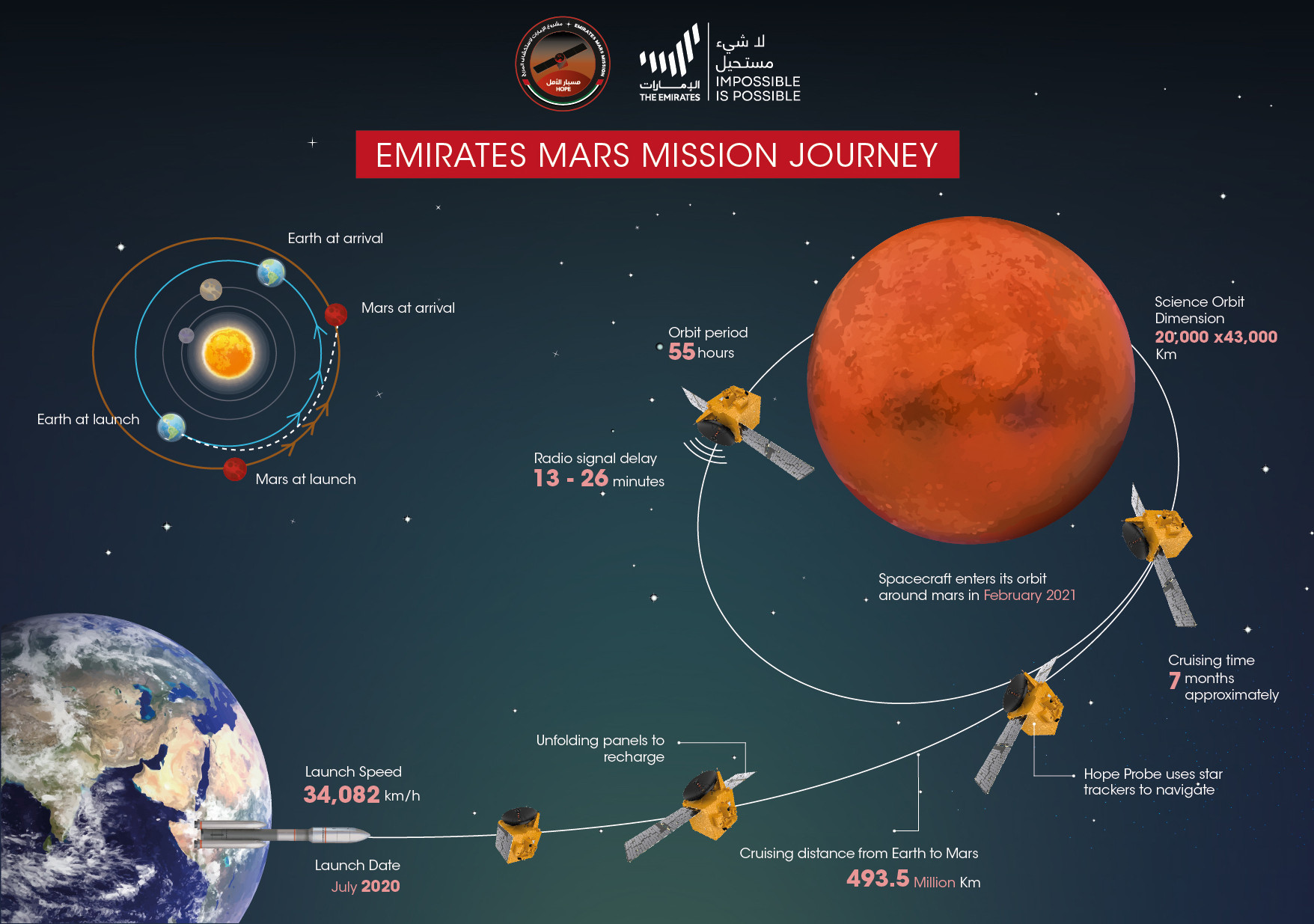United Arab Emirates launches 'Hope' mission to Mars on Japanese rocket
The United Arab Emirates made history today.
A mission called Hope, the Arab region's first attempt to go interplanetary, is on its way to Mars.
Hope blasted off from Japan's Tanegashima Space Center atop a Mitsubishi Heavy Industries H-IIA rocket on Sunday (July 19) at 5:58 p.m. EDT (2158 GMT). The spacecraft separated from the rocket about an hour after liftoff and was expected to deploy its solar panels to power the seven-month cruise to Mars.
"Years of hard work and dedication have paid off in a big way," Ambassador Yousef Al Otaiba said shortly after the launch during a virtual watch party. "This is a huge accomplishment, but it's just the beginning."
Related: The UAE's Hope Mars orbiter: Here's 6 things to know
More: The United Arab Emirates' Hope mission to Mars in photos

"It's hard to put the words together but honestly, watching that take off, knowing how hard it was, knowing how challenging it was, witnessing that success made me feel immense pride," Al Otaiba said. "I think every Emirati on the face of the planet should go around feeling proud of what his country has managed to accomplish today."
The launch had originally been scheduled for July 14 but was delayed multiple times due to poor weather conditions at the launch site.
The $200 million Hope mission, also called the Emirates Mars Mission, is the UAE's first foray into interplanetary exploration, and its arrival was designed to mark the nation's 50th anniversary. In particular, mission planners wanted a project that would kickstart the nation's technology and science sectors as the country looks for an economic model that can sustain it beyond its oil wealth.
Get the Space.com Newsletter
Breaking space news, the latest updates on rocket launches, skywatching events and more!
Mars 'Hope': UAE's 1st interplanetary spacecraft aims to make history
So the nation targeted a Mars orbiter and stipulated that the mission needed to contribute internationally valuable science data. For a country with hardly any planetary science expertise, that was a steep challenge.
Mission scientists consulted Mars scientists from around the world and concluded that a feasible way to accomplish the goal was to design a probe that would gather comprehensive data about the Martian atmosphere in all its complexity.
That's Hope: Relying on existing technology but placed in a unique equatorial orbit, the spacecraft should give scientists the data they need to piece together how weather on Mars changes over the course of a day and of a year at every spot on the globe, and how the planet is losing its atmosphere.
Mars' atmosphere has been tenuous for eons and is now dominated by carbon dioxide, but it was once much plusher and kept the planet's water in place, and scientists want to know how that change took place.

In order to answer these questions, Hope is equipped with three different instruments, an imager and two spectrometers. The first will provide detailed images of the planet's surface while all three will gather data that lets scientists track what ingredients are located where in the atmosphere of Mars.
Now that the SUV-sized spacecraft is on its way, Hope still has a long journey ahead of it — 300 million miles (500 million kilometers) long, in fact. The spacecraft will spend seven months trekking through deep space before slipping into orbit around the Red Planet. From that point, Hope will spend a full Martian year, or nearly two Earth years, orbiting Mars and studying its atmosphere.

Today's launch kicks off a spree of Red Planet-bound liftoffs as scientists seek to capitalize on a three-week window of favorable orbital alignment between Earth and Mars that only occurs every 26 months.
China is next on the launch docket, with a mission called Tianwen-1 scheduled to blast off on July 23. The mission will include an orbiter, lander and rover and will aim to tackle questions about the Red Planet's geology and environment.
Then, NASA's Mars 2020 mission heads to countdown on July 30. That launch stars Perseverance, a massive six-wheeled, life-hunting rover carrying a tiny helicopter that will, if all goes well, become the first aircraft to fly on another planet.
Email Meghan Bartels at mbartels@space.com or follow her on Twitter @meghanbartels. Follow us on Twitter @Spacedotcom and on Facebook.
Join our Space Forums to keep talking space on the latest missions, night sky and more! And if you have a news tip, correction or comment, let us know at: community@space.com.

Meghan is a senior writer at Space.com and has more than five years' experience as a science journalist based in New York City. She joined Space.com in July 2018, with previous writing published in outlets including Newsweek and Audubon. Meghan earned an MA in science journalism from New York University and a BA in classics from Georgetown University, and in her free time she enjoys reading and visiting museums. Follow her on Twitter at @meghanbartels.
-
Truthseeker007 ReplyCassandraCarrillo said:Soo awesome!! I can picture every one up there exploring all of Gods' Beautiful Creations!! Soo neat!! Y'all are all amazing!! Great Job everyone!!
I have been to Dubai a few times. I have to say extremely hot there though.









